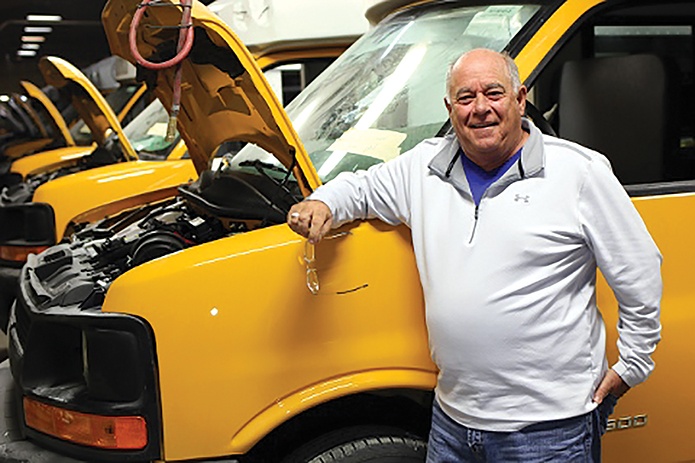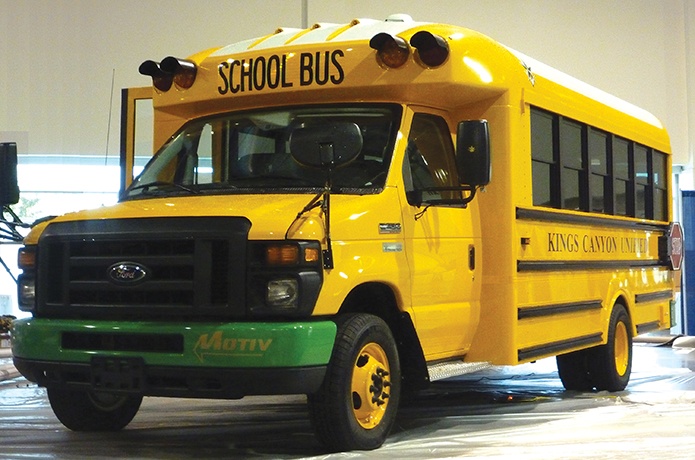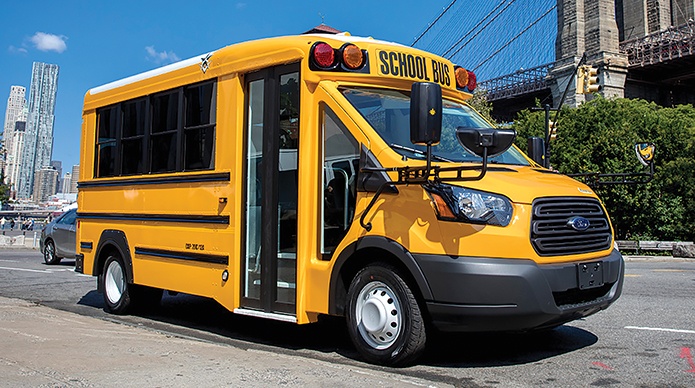
School BUSRide spoke with John Phraner, president of Trans Tech Bus, for this exclusive interview. Established in 2007, Trans Tech manufactures industry-leading Type-A school and commercial buses. The company offers the industry’s only narrow-body dual wheel along with a full line of single and dual wheel models. The company is now bringing green solutions to the market with aerodynamic designs and the all-electric eSeries.
What do you think the most significant changes in pupil transportation have been over the last five to 10 years?
From Trans Tech’s perspective and because we are a Type-A school bus manufacturer, I’d have to say some of the most significant changes that we’ve seen in pupil transportation center around structural innovations that we are designing and incorporating into our school buses to make them stronger and more adaptable from an operational standpoint. Our innovative pan-formed floors, Versatrack seating and heavier gauge structural steel are all things we have introduced to the market to improve safety and product competitiveness.
All of our innovations are customer centric. We listened to school bus drivers, school district transportation directors, school bus contractors, mechanics and basically anybody who touches one of our school buses. We have been at the forefront of efficiency and environmental-friendly innovation, and we launched the first mass-produced all electric school bus that incorporates our signature aerodynamic designs.
Looking forward, what do you think are some significant changes the industry can expect?
One industry change that is happening quite quickly, at least here in New York and California, is the push to incorporate all-electric school buses into urban and large suburban fleets. And as long as these proposals are drafted properly, we could see a serious increase in the number of all-electric school buses we produce. The key is that the laws have to take into consideration the entire school transportation market and not just focus on the emissions goals. It’s a very complicated market and our vehicles are responsible for transporting life’s most precious cargo – so we have to get it right.
The money is coming for all-electric, it’s just a matter of implementing it responsibly to put safety first. We will probably see innovations pertaining to vehicle weight as well. With the push to switch to all-electric and other alternative fuel buses, the pressure will be on us to deliver the same vehicle capacities, but the industry won’t be able to achieve this goal because of the battery constraints of all-electric school buses. Developing ways to decrease weight will be a primary focus of the industry as we work within the constraints of current battery technology.

Do you feel well positioned to continue down that road if the industry continues demanding lighter weight vehicles to accommodate new propulsion types?
Yes, because we have the best team in the Type-A market. Nobody does it better, but it takes time, it takes testing, and significant investment. The floor is one example of where we might be able to reduce weight. The pan-formed floors that we build on are the strongest on the market — and other manufacturers have said we build the toughest floor out there; however, there are new composite materials that have the same or greater strength – it’s just a matter of testing and affordability.
I will not reduce the structural integrity of our school buses, but if I had a material that my engineers and I were comfortable with, it would be something to consider. Sometimes you are only reducing weight by as little as 50 pounds – but that can make a big difference. If you can reduce the weight of the vehicle, you can get greater range. We are always exploring new technologies and how to potentially incorporate them into our school buses.

From a dealer’s perspective, what are your thoughts on electric adoption? How do you view it shaking out with electric versus other options such as natural gas or propane?
Going back to that battery technology, I think bus price, infrastructure costs, battery range and power supply constraints are the most difficult hurdles to get over when it comes to all-electric school buses. For example, school bus operators (school districts and private contractors) might see some advantages – especially in warmer urban areas, but infrastructure cost and space will be problems. With limited space in most urban areas, how do you install all the required infrastructure?
The New York City metro area is the largest market for our Type-A all-electric school buses, and that’s why we are located just up the road. And as the City and State move toward zero-emission vehicles it will be critical for the state to fully fund that initiative. We can’t place the financial burden on our schools and local property taxpayers.
The transition to zero emission school buses must be done responsibly and that includes making sure all-electric school buses work for everyone – because if they don’t, and the mandates aren’t flexible, and we don’t allow all environmentally-friend technologies in the marketplace we could see major problems across the country and the people who are at risk are innocent children.
Today, I don’t have a lot of people asking for electric vehicles. The demand is almost non-existent, but thankfully Ford is looking to the future and talking about electrifying the Ford Transit so we can be prepared for future demand.
What do you see as the most influential factors when it comes to large-scale electric adoption?
Number one is availability – are there enough products on the road that can truly meet the safety requirements, range demands, provide proper heating and air conditioning, and price – if all these things aren’t in alignment, then there are no environmental advantages to going all-electric. We can’t have situations where kids are freezing on buses to protect battery range, or in an emergency kids are stranded because the bus can’t reach a recharging station.
The fact that Ford and GM are investing heavily in all-electric is a good sign, but it has yet to be proven that the technology is superior to today’s near-zero engines. Infrastructure, grid and power generation investments must happen first. Either way, as long as it’s done correctly, Trans Tech will continue to be at the forefront of this all-electric pioneering journey.
What kind of advancement do you see as being the most instrumental in propelling pupil transportation into the future?
Again, it all comes down to product. If I can make it more affordable while strengthening the vehicles, that is my goal. I have worked on that for years now and that is one of our competitive advantages – our customers want strong, safe, easy to drive, and efficient school buses. We are so heavily regulated that there is not a lot that can change on the vehicles, but we look at potential innovations every day.
The biggest problems facing the industry today are supply chain related – the cost of everything is increasing rapidly and availability of materials is unpredictable.
I know that our seat manufacturer, the same one used by just about everybody in the business, increased their prices by 35 percent from last year. I have to protect my customers from such volatility, but all of our suppliers have increased prices – it’s the worst it has ever been.
My goal when I first came to Trans Tech was to take their existing product, make it better by incorporating customer-centric improvements, increase our dealer network, and grow our loyal customer base. This has been the focus since 2012 and it continues to be our focus today. Personally, I’m very happy with the product that we’re making right now.


